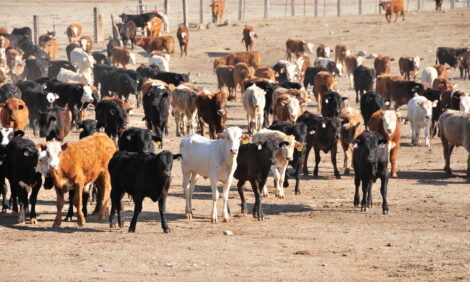



Celebrating Beef CRC's Success
AUSTRALIA - The Australian beef industry is about to farewell a pioneer, the Co-operative Research Centre for Beef Genetic Technologies, better known as the Beef CRC.
Since 1993, the Beef CRC has impacted on every Australian beef business with its advances in meat science, genetics, animal health and nutrition, management strategies, environmental sustainability and animal welfare.
The Beef CRC has been funded by multiple participants including the Australian Government, state governments, MLA, as well as Australian and international research organisations.
The Beef CRC originated tools such as Meat Standards Australia (MSA), new traits in BREEDPLAN, Bovilis MH™ and Pestigard™ vaccines and cross-breeding strategies are widely used to improve bottom lines.
Beef CRC Chief Executive Officer, Dr Heather Burrow, was excited about the organisation’s presentation at the recent Beef Australia 2012 of DNA-based prediction equations, the culmination of entirely new research using the bovine genome sequence, which first became available in 2006.
“By combining measurements of cattle for economically important traits with information from the bovine genome sequence, we have developed entirely new prediction equations for very difficult or expensive-to-measure traits such as feed efficiency, carcase and beef quality, and male and female reproduction traits,” she said.
“This means a simple DNA test can provide an accurate guide to an animal’s genetic makeup for a broad range of production, health, quality and welfare traits.
“These are being integrated directly into BREEDPLAN to increase the accuracy of estimated breeding values (EBVs) in seedstock cattle.”
The CRC uses a process known as ”genomic selection” which uses a genome-wide panel of closely spaced markers called single nucleotide polymorphisms (SNPs).
Genomic prediction equations are based on commercial panels of either 50,000 or 800,000 SNPs to provide beef producers with a simple and cost-effective method of identifying animals early in life best suited for breeding.
In coming years, as the cost of using SNP panels reduces, it will be possible to use the tests to best manage commercial cattle to ensure they meet beef market specifications.
“We’re now working on a 7,000–SNP panel which can be imputed up to 800,000 SNPs. This should considerably reduce the costs of testing. So perhaps in less than five years it will be commercially feasible to genotype mobs of commercial weaners,” Dr Burrow said.
Another achievement during the CRC’s current term was the development of a diagnostic test for the polled gene in Bos indicus cattle.
“We were concerned dehorning would have animal welfare implications, so it was critical we find an alternative,” Dr Burrow said.
"We now have the means to transition the northern beef industry to a truly polled herd.”
The CRC estimates the value to Queensland producers alone of not having to dehorn calves at A$3.5 million a year. Beef CRC researchers have also produced two important vaccines: Bovilis MH™ to prevent bovine respiratory disease (BRD) and Pestigard™ used to control BRD and reproductive losses in herds due to pestivirus.
Sales of the two products had exceeded A$20 million from the time of their release up to June 2010.
Northern producers have benefited from the CRC’s cross-breeding project aimed at improving beef eating quality and delayed post partum anoestrus in Brahmans, a major inefficiency in northern breeding herds.
The CRC’s results show that cross-breeding Brahmans with a combination of African and British breeds to produce either first-cross or composite progeny have significant productivity and profitability benefits for the northern industry.
“Another benefit is it provides northern producers with new market options and by doing so, increases financial security,” Dr Burrow said.
The CRC has delivered numerous other technologies and management practices:
- combinations of genetics and growth path strategies to maximise animal compliance with market specifications;
- feedlot waste recycling;
- pre-boosting strategies for weaners destined for feedlots;
- reduced on-farm and pre-slaughter pathogen loads to improve food safety;
- improved animal welfare practices.
TheCattleSite News Desk


